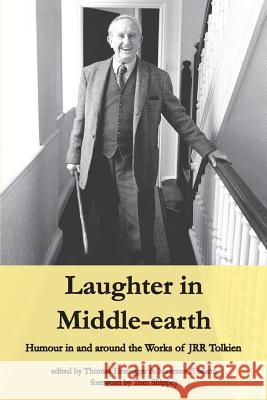Laughter in Middle-earth: Humour in and around the Works of JRR Tolkien » książka
Laughter in Middle-earth: Humour in and around the Works of JRR Tolkien
ISBN-13: 9783905703351 / Angielski / Miękka / 2016 / 262 str.
"It is precisely against the darkness of the world that comedy arises, and it is best when that is not hidden." With these words Tolkien replied to Rayner Unwin's comments upon first reading Book 1 of Lord of the Rings. Rayner had not commented on the comedy of Book 1 but on the overpowering effect of "the struggle between darkness and light," as he put it, and that omission disappointed Tolkien. If this was the response of Tolkien's famous first reviewer, it is not surprising that academic studies have also tended to overlook or disregard both the presence of humour in Tolkien's work and the effect of his work to inspire humour in readers' and artists' responses. Laughter in Middle-earth: Humour in and around the Works of JRR Tolkien more than compensates for this critical oversight. From onomastic studies and parody, to historical, literary, and social contexts, a history of illustrations, textual interpretations, heroic forms of defiant laughter, and then to a reminiscence of the Inklings' tastes in humour, these scholarly articles analyse the broad range of comedy which arises against the darkness of the world in Tolkien's narratives. As well, interspersed between these studies are numerous comic illustrations, some of which appear in print for the first time, from well-known Tolkien illustrators. As Eru is reported saying, in a typically egregious internet appropriation of Tolkien, "There is no joke that hath not its uttermost source in me." This book demonstrates that humour is truly a significant aspect of Middle-earth and its influences. Eru, like Tolkien himself, could, indeed laugh.
"It is precisely against the darkness of the world that comedy arises, and it is best when that is not hidden."With these words Tolkien replied to Rayner Unwin's comments upon first reading Book 1 of Lord of the Rings. Rayner had not commented on the comedy of Book 1 but on the overpowering effect of "the struggle between darkness and light", as he put it, and that omission disappointed Tolkien. If this was the response of Tolkien's famous first reviewer, it is not surprising that academic studies have also tended to overlook or disregard both the presence of humour in Tolkien's work and the effect of his work to inspire humour in readers' and artists' responses.Laughter in Middle-earth: Humour in and around the Works of JRR Tolkien more than compensates for this critical oversight. From onomastic studies and parody, to historical, literary, and social contexts, a history of illustrations, textual interpretations, heroic forms of defiant laughter, and then to a reminiscence of the Inklings' tastes in humour, these scholarly articles analyse the broad range of comedy which arises against the darkness of the world in Tolkien's narratives. As well, interspersed between these studies are numerous comic illustrations, some of which appear in print for the first time, from well-known Tolkien illustrators.As Eru is reported saying, in a typically egregious internet appropriation of Tolkien, "There is no joke that hath not its uttermost source in me." This book demonstrates that humour is truly a significant aspect of Middle-earth and its influences. Eru, like Tolkien himself, could, indeed laugh.











